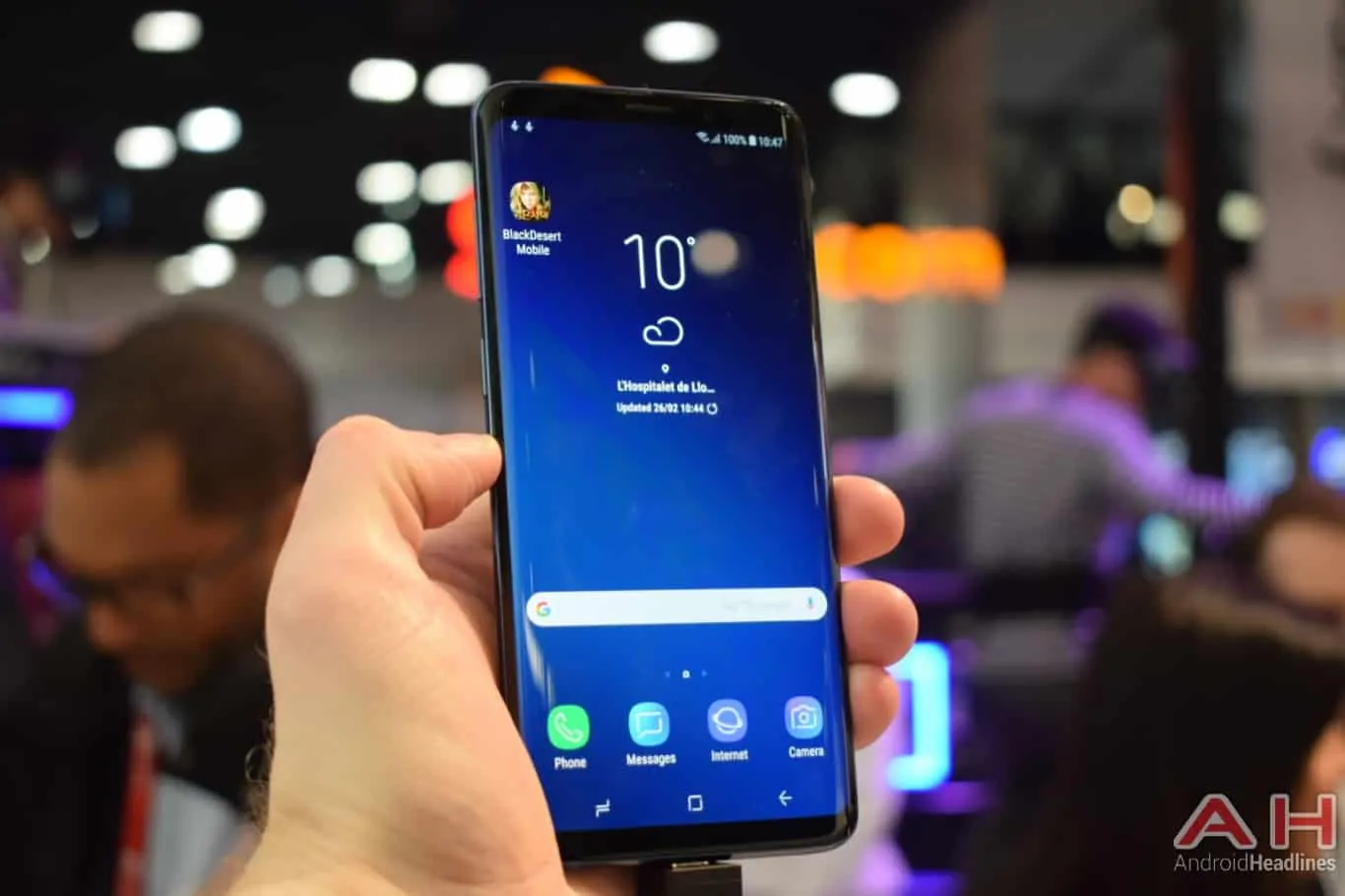The Samsung Galaxy S9 has the best display ever seen on a smartphone which matches or exceeds the current records across a broad range of segments, industry experts at DisplayMate Technologies concluded after publishing the results of their extensive testing of Samsung’s latest Android flagship. The South Korean phone maker once again managed to push the boundaries of mobile OLED panels, having created a historic piece of equipment that was found to be equally impressive on both the Galaxy S9 and Galaxy S9 Plus whose screens are virtually identical save for their minor size difference which affects pixel density. According to DisplayMate’s findings, the Galaxy S9 lineup has the highest absolute color accuracy of any handset ever, with its Super AMOLED QHD+ panels delivering colors that are indistinguishable from perfect to the unaided eye. In terms of everyday performance, both the Basic and Cinema mode will deliver extremely accurate colors, whereas the Adaptive Display mode isn’t as successful in doing so by design since its primary purpose is to make colors more vivid and expand the displayed color gamut.
The screens of the Galaxy S9-series devices can deliver up to 1,130 nits of luminance, which is only slightly less than the Galaxy Note 8 whose peak brightness stands at just over 1,200 nits. While that may seem like a small step back, the overall package is much more impressive by virtue of the fact the panels exhibit the smallest luminance shifts with varying picture content out of any other OLED offering on the market. Even when average picture levels are extremely low and the bright pixels have much higher peaks because more power is available to them, the Galaxy S9 lineup’s luminance variation amounts to no more than six-percent and is almost impossible to notice even when you know what you’re looking for, with Samsung thus successfully addressing one of the most curious issues associated with OLED panels.
The newly announced devices also offer an unprecedented level of automatic brightness controls powered by dual ambient light sensors installed on both their front and back panels. Whereas the average smartphone and tablet contains only a single front-facing module and hence is often inaccurate when it comes to adjusting its display brightness on its own as the sensor can easily be tricked by the shadow of the user’s head, the Galaxy S9 lineup takes its entire array into account when deciding on how bright or dark its screen is going to get as it can generate an extremely accurate reading of the amount of ambient light your eyes are exposed to. Together with the Galaxy S8 and Galaxy Note 8 series, the Galaxy S9 family is the world’s only smartphone lineup to have two ambient light sensors.
In terms of the native color gamut, the Galaxy S9 lineup consists of industry-leading devices capable of displaying 113-percent of the DCI-P3 space and 141-percent of the sRGB/Rec.709 standard. The very nature of OLED technologies guarantees the Galaxy S9 and Galaxy S9 Plus offer infinite contrast given how their blacks are truly black; with every pixel being lit individually, those that are meant to be black are simply left turned off, which not only allows for such a perfect contrast but also conserves energy, thus improving battery life and allowing for extra features such as the Always-On Display. The Super AMOLED panels of the two Android flagships also have the industry’s lowest screen reflectance of only 4.4-percent and have managed to achieve DisplayMate’s highest contrast rating in ambient light – 257.
As is the case with brightness variation at low average picture levels, Samsung’s newest mobile panels are also unfazed by shifting viewing angles, with their brightness dropping by only 29-percent at 30 degrees, whereas the contents of most other small displays in the industry become virtually unintelligible at such angles. While viewing Samsung’s latest screen in the same circumstances, its colors also remain impressively consistent as the white point shifts by an almost negligible amount that’s the smallest in the industry and extremely difficult to observe. The Galaxy S9 and Galaxy S9 Plus tie the handset segment’s best displays in terms of image sharpness, offering a 3K resolution of 2,960 by 1,440 pixels amounting to an 18.5:9 aspect ratio. While some of Sony’s devices used 4K panels for several years now, DisplayMate’s findings and extensive testing suggest such a resolution doesn’t appear visually sharper on small screens meant to be utilized by smartphones.
Samsung’s new high-end offerings have both been certified by the UHD Alliance for Mobile HDR Premium, with the consortium verifying they’re capable of playing 4K UHD content and support a high dynamic range on par with that of the best TVs on the market. In practice, the Galaxy S9 and Galaxy S9 Plus will display compatible HDR content in a perfectly accurate manner, being capable of supporting such an expanded range of color, brightness, and contrast. That functionality is directly enabled by the combination of the aforementioned support for the DCI-P3 gamut and the infinite contrast ratio. With the addition of an integrated video processor, the Android-powered smartphones can even enhance ordinary videos and ennoble them with an HDR-like effect that isn’t as good as native HDR but is still a significant and visually obvious improvement over the standard dynamic range.
In overall, the screens found on the Galaxy S9 lineup are conceptually similar to those of the Galaxy S8 and Galaxy S8 Plus but manage to outperform them in almost every aspect through a combination of slightly better hardware and much more efficient optimization. That holistic approach to panel design, production, and calibration allowed the Seoul-based original equipment manufacturer to deliver the world’s greatest mobile displays to date, both in terms of absolute picture quality and color accuracy, with the latter being visually indistinguishable from perfection, DisplayMate claims. The technological achievements that went into the Galaxy S9 and Galaxy S9 Plus allow the two smartphones to outperform everything from handsets and tablets to laptops and 4K UHD TVs, as well as any kind of computer monitors subjected to the same rigorous testing.
While the technology can always be improved and Samsung is likely to do so as early as this year with the Galaxy Note 9, the overall OLED package offered by its latest Android flagships isn’t just industry-leading across the board but also lacks any noticeable weaknesses and is the first device to pass all of DisplayMate’s tests with flying — i.e. green — colors. Anyone looking to pick up the Galaxy S9 or Galaxy S9 Plus this year hence shouldn’t have any objections to the quality of Samsung’s latest displays and the four viewing modes supported by the handsets will provide consumers with enough versatility to enjoy all types of content regardless of the circumstances, the industry experts at DisplayMate concluded.
The South Korean tech giant is expected to continue improving its OLED solutions going forward, even if it has no interest in returning to such panels in the TV segment, as suggested by the fact that some of its executives are aggressively dismissive of such a possibility. The Galaxy S9 and Galaxy S9 Plus will officially become available for pre-orders come Friday and are set to be released globally on March 16.










